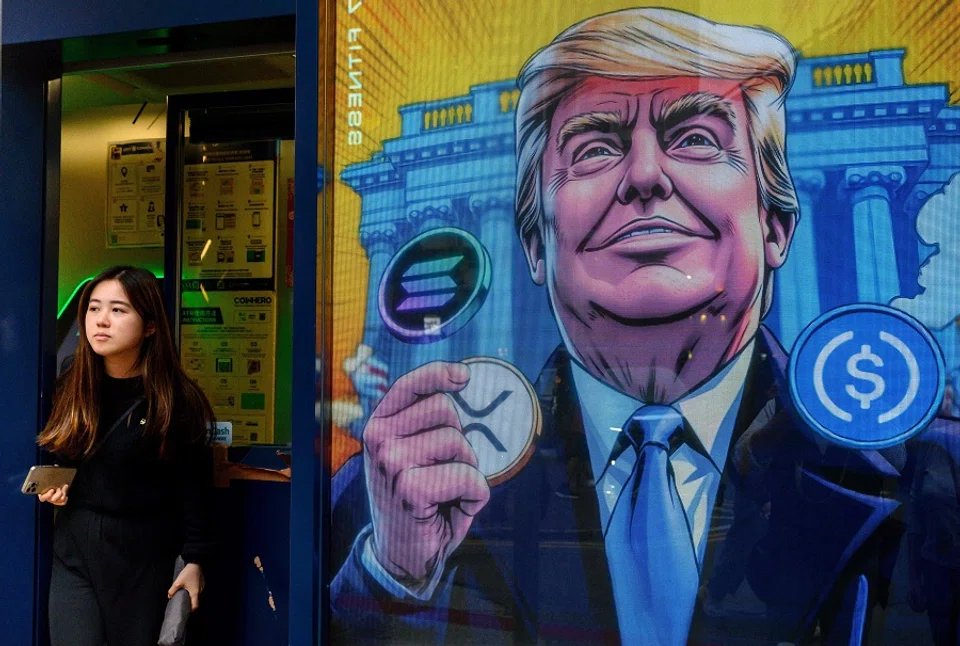Bitcoin for oil: Can crypto help Russia and China bypass the dollar?
Could cryptocurrencies, such as Bitcoin, enable China and Russia to bypass the US dollar? Amid US tariffs and sanctions, this question is an increasingly pertinent one, but there are some factors limiting its immediate impact. Researcher Eka Khorbaladze explores the possibilities.

As global trade tensions escalated in spring 2025, China’s crude oil imports from Russia reached a record high of 108.5 million metric tons, equivalent to approximately 2.17 million barrels per day (bpd). This marked a 1% increase from 2023, solidifying Russia’s position as China’s leading oil supplier. However, the ongoing challenges posed by US tariffs and sanctions have prompted both nations to explore alternative financial mechanisms, with a growing focus on bypassing traditional financial systems to sustain this critical trade relationship.
Financial analysts, including those from VanEck, and conversations on platforms like X have suggested that cryptocurrencies, such as Bitcoin, could enable China and Russia to bypass the US dollar. This possibility in 2025 is a compelling prospect, fuelled by US tariffs and sanctions. Russia’s 2024 legalisation of cryptocurrencies and China’s need for stable oil supplies lend credibility to the idea, but China’s 2021 cryptocurrency ban and focus on the e-CNY suggest limited engagement. As geopolitical tensions persist, interest in dollar alternatives will endure, though the cryptocurrency narrative awaits substantiation.
These measures have amplified concerns about reliance on the dollar, fuelling discussions about cryptocurrency use in international trade.
Geopolitical context driving interest
The re-election of President Donald Trump in 2025 has ushered in aggressive US economic policies, prompting interest in alternatives to dollar-based trade. In April 2025, the US imposed a 145% tariff on Chinese imports, encompassing goods from consumer electronics to industrial materials, citing trade imbalances and illicit drug trafficking. China retaliated with 125% tariffs on US exports, a suspension of critical rare earth shipments, and sanctions on 18 American companies.
Additionally, the US introduced 10% tariffs on most trading partners, though these are temporarily suspended for 90 days, and during the most recent US-China talks in Switzerland, the US and China agreed to pause their tit-for-tat tariffs for 90 days, with US lowering its tariffs on China from 145% to 30%, and China lowering its tariffs on the US from 125% to 10%. These measures have amplified concerns about reliance on the dollar, fuelling discussions about cryptocurrency use in international trade.

Russia faces parallel challenges. In March 2025, the US tightened sanctions, closing loopholes that previously allowed Russian banks to process energy-related payments, effectively barring them from dollar transactions and the SWIFT interbank system. With US$192 billion in annual oil trade at stake, Russia’s need for alternative payment mechanisms has intensified. The combination of US sanctions and trade barriers has created a fertile ground for exploring cryptocurrencies, though no verified evidence confirms their adoption in Russia-China trade.
China’s cryptocurrency policy
China maintains a stringent stance on decentralised cryptocurrencies. In September 2021, the People’s Bank of China (PBOC), alongside other regulatory bodies, issued a comprehensive ban on cryptocurrency activities, including trading, mining and initial coin offerings (ICOs). The policy was driven by concerns over financial instability, money laundering and capital flight, as cryptocurrencies operate outside state control.
The ban prohibits domestic financial institutions from engaging with cryptocurrencies and restricts citizens from participating in crypto markets, with enforcement mechanisms including surveillance of online platforms and bank accounts.
China’s commitment to the e-CNY underscores its preference for state-controlled digital finance, casting doubt on the likelihood of embracing decentralised cryptocurrencies like Bitcoin for trade.
Instead, China has prioritised the digital yuan, or e-CNY, a central bank digital currency (CBDC) launched in pilot phases in 2020 and expanded in subsequent years. The e-CNY is fully controlled by the PBOC, enabling real-time transaction monitoring and alignment with China’s regulatory framework.
Since 2022, China has tested the e-CNY in cross-border trade, including with Russia, to facilitate yuan-based settlements and reduce dollar dependence. The e-CNY is operational in over 20 cities and has been used in limited international transactions, with plans for broader global adoption. China’s commitment to the e-CNY underscores its preference for state-controlled digital finance, casting doubt on the likelihood of embracing decentralised cryptocurrencies like Bitcoin for trade.
Russia’s cryptocurrency policy
In contrast, Russia has adopted a more permissive approach to cryptocurrencies, driven by economic necessity. Historically cautious, Russia reversed its stance in August 2024, when President Vladimir Putin signed legislation legalising the use of cryptocurrencies for international trade settlements. This policy allows Russian businesses to use digital assets, including Bitcoin, Ethereum and stablecoins like Tether, to bypass Western sanctions and facilitate cross-border payments. The law designates cryptocurrencies as a legitimate tool for trade but imposes strict oversight, requiring transactions to be reported to the Central Bank of Russia and conducted through licensed entities.
By enabling crypto-based trade, Russia aims to maintain access to global markets, particularly with partners like China, India and BRICS nations.

The 2024 legislation was a response to intensified US and European sanctions, particularly those targeting Russia’s energy exports. By enabling crypto-based trade, Russia aims to maintain access to global markets, particularly with partners like China, India and BRICS nations. The policy also permits the creation of state-regulated crypto exchanges and digital wallets, with pilot programs launched in late 2024.
Potential cryptocurrency trade mechanism
Overall, discussions suggest that Russia, restricted from dollar-based systems, may be converting Chinese yuan into rubles using cryptocurrencies through intermediaries. The proposed mechanism involves:
Chinese buyers transferring yuan to intermediaries, potentially in jurisdictions like Hong Kong, where cryptocurrency trading is permitted.
These intermediaries convert yuan into cryptocurrencies, such as Bitcoin or Tether, via licensed exchanges.
The cryptocurrencies are transferred to Russian recipients or their agents, who convert them into rubles or other currencies for domestic use.
Hong Kong is frequently cited as a potential hub due to its cryptocurrency-friendly regulations, overseen by the Securities and Futures Commission (SFC). Unlike mainland China, Hong Kong licenses virtual asset service providers, with over 20 exchanges, including HashKey and OSL, operating legally in 2025. Its role as a financial intermediary for China and the world’s largest offshore RMB hub, handling US$400 billion in trade-related payments annually, adds plausibility to this scenario. However, no evidence — such as blockchain analytics, exchange records, or official statements — confirms that such transactions are occurring yet.
... the plausibility of this mechanism rests on Russia’s legal framework for cryptocurrencies and China’s need for uninterrupted oil imports, which account for a significant portion of its US$244.8 billion annual trade with Russia.

However, the plausibility of this mechanism rests on Russia’s legal framework for cryptocurrencies and China’s need for uninterrupted oil imports, which account for a significant portion of its US$244.8 billion annual trade with Russia. Analysts estimate that, if active, these transactions might involve tens of millions of dollars monthly, a fraction of total trade. Yet, without verifiable data, these remain unconfirmed assertions.
Global financial context
The discussions occur against a backdrop of evolving global finance. The BRICS bloc, representing 45% of the world’s population and 28% of global GDP in 2024, has advocated for de-dollarisation since the 2010s. Initiatives like the BRICS Pay system and local currency trade agreements reflect this ambition. Cryptocurrencies, while not central to these efforts, align with the broader goal of reducing Western financial influence. However, their volatility — Bitcoin’s price fluctuated 30% in 2024 — and regulatory challenges limit their scalability for large-scale trade.
The absence of confirmed cryptocurrency use in Russia-China trade limits its immediate impact. Even if occurring, such transactions would likely be small compared to the US$7 trillion in global trade conducted annually. Asia’s economic strategies remain anchored in established systems, with cryptocurrencies a topic of curiosity rather than a transformative force.
The rise of CBDCs, like China’s e-CNY and Russia’s digital ruble (in pilot since 2023), offers a more controlled alternative. Over 134 countries and currency unions, representing 98% of global GDP, are exploring CBDCs in 2025. These state-backed systems may overshadow decentralised cryptocurrencies in reshaping trade, particularly for nations like China prioritising oversight.




![[Big read] China’s 10 trillion RMB debt clean-up falls short](https://cassette.sphdigital.com.sg/image/thinkchina/d08cfc72b13782693c25f2fcbf886fa7673723efca260881e7086211b082e66c)
![[Big read] Love is hard to find for millions of rural Chinese men](https://cassette.sphdigital.com.sg/image/thinkchina/16fb62fbcf055b710e38d7679f82264ad682ce8b45542008afeb14d369a94399)